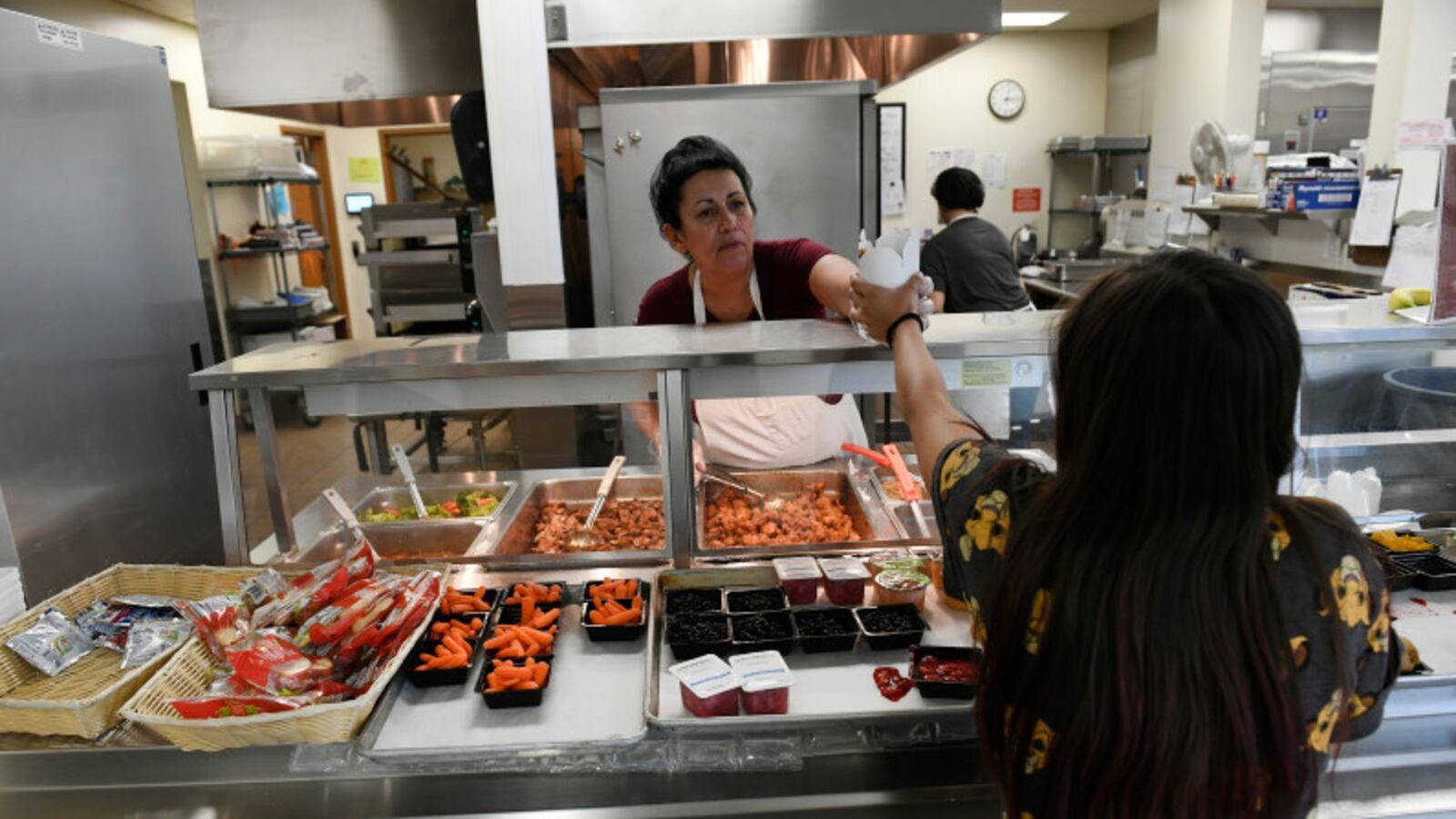When Colorado expanded a school lunch subsidy to middle school students, the number of sixth- through eighth-graders eating lunch at school went up in districts across the state.
Twenty-sixth percent more middle school students ate lunch at school in the Greeley-Evans district, where a majority of students live in poverty, but even in the more affluent Littleton district in Denver’s south suburbs, 11 percent more middle school students ate lunch.
For school nutritionists and children’s advocates, these kinds of results make the case for extending this same lunch subsidy to high school students.
“We know the co-pay is a barrier because of the large uptick in participation when it goes away,” said Erin Miller, vice president of health initiatives for the Colorado Children’s Campaign.
The “co-pay” is the 40 cents per meal that families who qualify for reduced-price lunch — but who make too much money to qualify for free lunch — are responsible for. The federal government picks up most of the cost for these lunches, and since 2008, Colorado has covered the 40 cents for the youngest students, rendering those lunches free to their families. This program has gradually expanded, reaching middle school students in legislation passed last year.
A bill that passed out of the House Education Committee Thursday would cover the 40-cent cost difference for high school students, a longtime goal of advocates.
“The state of Colorado has been trying to ensure that kids in poverty have access to food for a decade,” said Danielle Bock, nutrition services director for the Greeley-Evans district and a public policy and legislative consultant with the Colorado School Nutrition Association. “This is the final step.”
Miller said hunger affects children in school not just academically but also emotionally, with hunger even associated with higher suicide rates. Advocates have pushed to expand the state subsidy because participation in school lunch goes down as children get older, even as their caloric needs go up.
Currently, households that earn less than 130 percent of the federal poverty level, or $32,630 for a family of four, qualify for free lunch through the federal program. Families who earn between 130 and 185 percent of the federal poverty limit, or up to $46,435 for a family of four, qualify for a reduced-price lunch. It’s children from that second category families who will benefit if this bill becomes law.
Bock said the vast majority of school food service agencies in Colorado have unpaid lunch debt that, under federal law, they can’t just write off. School districts either pick up the costs out of their general fund or try to collect from parents, which sometimes leads to the controversial practice of “lunch shaming,” in which schools serve less nutritious and appealing alternative lunches to students whose parents owe money.
Lawmakers started out wanting to ban lunch-shaming, but school nutritionists convinced them it would be better to have the state cover some of the extra lunch cost for families who are struggling to make ends meet.
When Denver ended the practice of serving “alternative” meals to families who hadn’t paid for lunch, the amount of lunch debt skyrocketed, with a large portion of it coming from families who had not signed up for subsidized lunches and might have the means to pay.
According to a fiscal analysis, Colorado plans to spend $2.2 million on lunch subsidies this school year. Expanding the program to high school students would cost an additional $464,000 next year, with that money going into school food service budgets.

